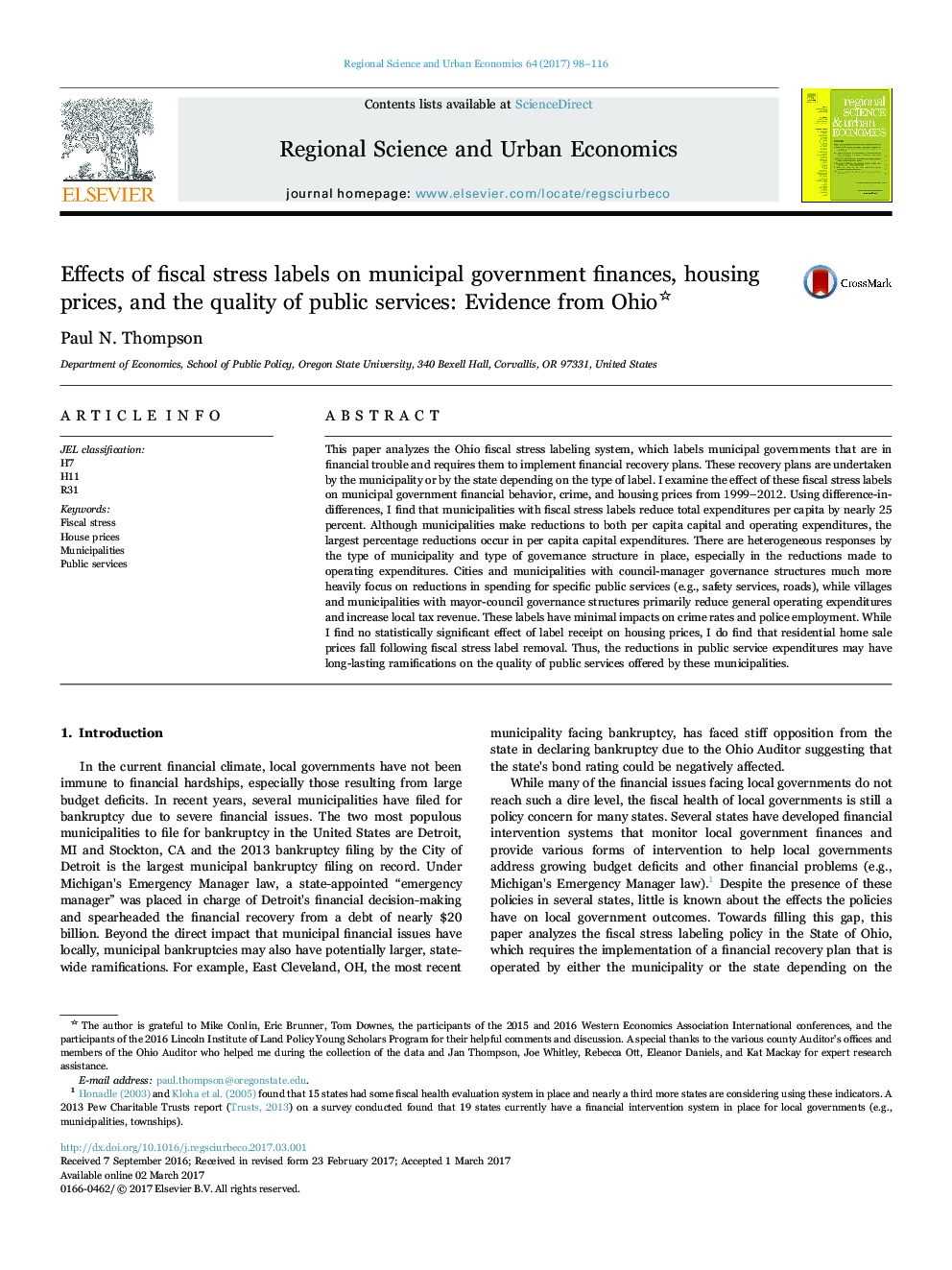| Article ID | Journal | Published Year | Pages | File Type |
|---|---|---|---|---|
| 5103723 | Regional Science and Urban Economics | 2017 | 19 Pages |
Abstract
This paper analyzes the Ohio fiscal stress labeling system, which labels municipal governments that are in financial trouble and requires them to implement financial recovery plans. These recovery plans are undertaken by the municipality or by the state depending on the type of label. I examine the effect of these fiscal stress labels on municipal government financial behavior, crime, and housing prices from 1999-2012. Using difference-in-differences, I find that municipalities with fiscal stress labels reduce total expenditures per capita by nearly 25 percent. Although municipalities make reductions to both per capita capital and operating expenditures, the largest percentage reductions occur in per capita capital expenditures. There are heterogeneous responses by the type of municipality and type of governance structure in place, especially in the reductions made to operating expenditures. Cities and municipalities with council-manager governance structures much more heavily focus on reductions in spending for specific public services (e.g., safety services, roads), while villages and municipalities with mayor-council governance structures primarily reduce general operating expenditures and increase local tax revenue. These labels have minimal impacts on crime rates and police employment. While I find no statistically significant effect of label receipt on housing prices, I do find that residential home sale prices fall following fiscal stress label removal. Thus, the reductions in public service expenditures may have long-lasting ramifications on the quality of public services offered by these municipalities.
Related Topics
Social Sciences and Humanities
Economics, Econometrics and Finance
Economics and Econometrics
Authors
Paul N. Thompson,
